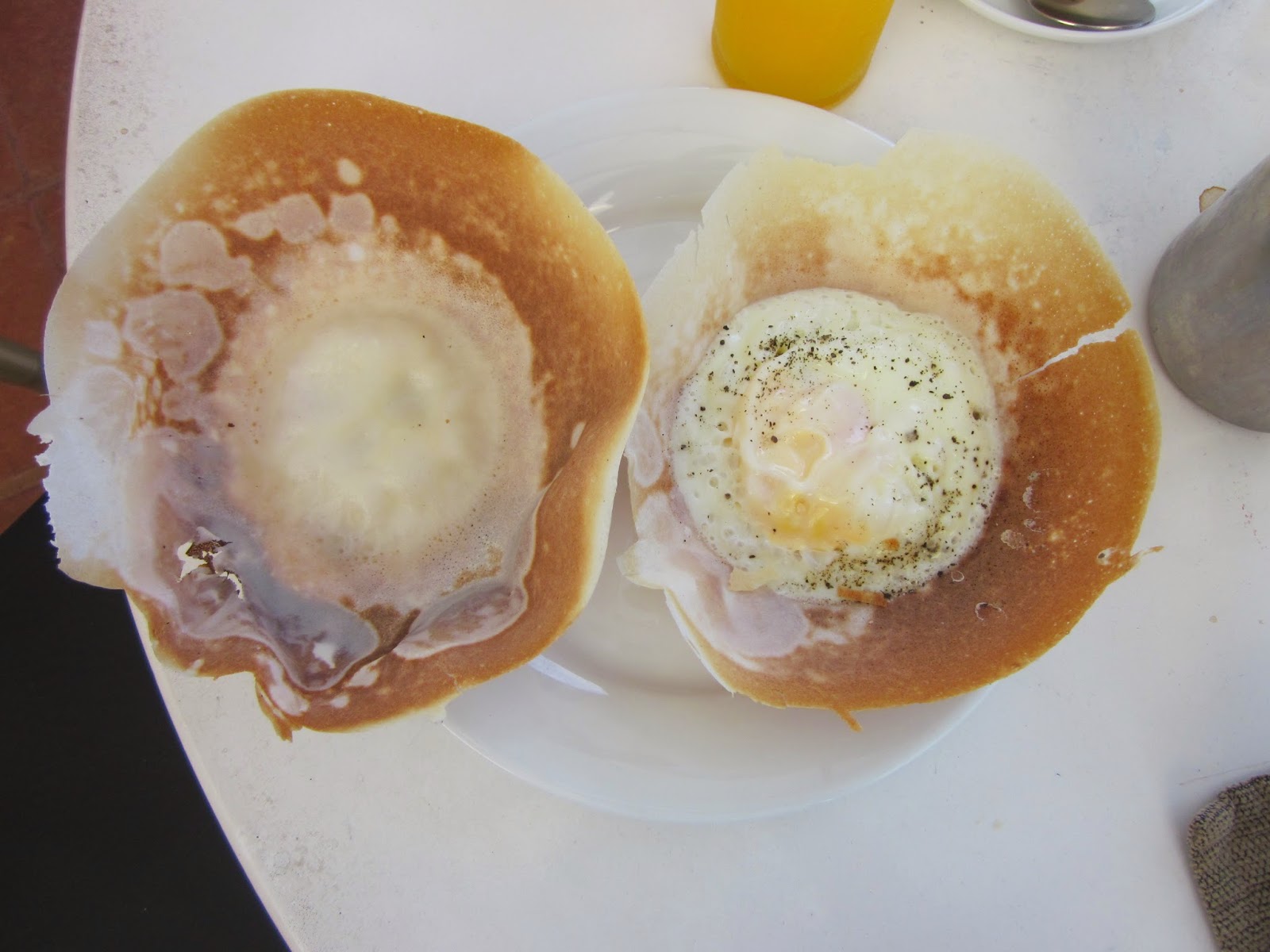I really like the breakfast at Mount Lavinia Hotel (MLH) because they make the iconic appa fresh on request. It is rather odd (read: different) though, that you can have an egg sunny side-up in the middle of the appa. I still do prefer our Malaysian version of a sweet centre.
As at MLH, our breakfasts at the Berjaya (Malaysian) Hotel were also mostly local Sri Lankan dishes.
A rather unique tasting fruit juice I discovered is that of the Wood apple (mostly growing wild), with its slight taste of sweet and sour but quite nice. Some describe its taste as that of blue cheese with tamarind. I like to eat blue cheese so I guess I am okay with wood apple. (I have just found out that we do have wood apple in Malaysia - gelinggai/belinggai - but I have never seen or tasted one before this!)
Our favourite drink in Sri Lanka is of course the Thambili or King coconut (water), which we try to get at every opportunity. The heat makes thambili the drink of choice. It is good that you can find this orange coloured coconut in many places on the streets. And it only costs 50 rupees!
One evening we dined at the Rasa Malaysia restaurant by the ocean. Okay, the Chef was Malaysian, especially flown out from Pulau Tioman, so the food was not quite Sri Lankan, yet not quite rasa Malaysia. Anyway A was feeling under the weather and wanted to 'cool down'. But there was no thambili on the menu. Then we spied a tree in front of the restaurant that had coconuts on it. We asked and they obliged! Thank you for the sweetest thambili ever. Or is it sweetest because it was gratis?
Thambili @ Rasa Malaysia Thambili @ Pinnawala
Mostly the thambili is consumed au naturel but sometimes I go for sweet, so jaggery (like our gula melaka) is added.
Kurumba hora - Thambili with jaggery @ The Shore by O!
On our road trip to Kandy we passed by Cadjugama/Kajugama, where kaju or cashews grow in abundance. You can buy these nuts from roadside vendors (usually ladies in colourful attire) or some little shops. Eat them roasted and also spiced with chili. We bought enough to munch our way throughout our stay in the island.
Cashew nuts of Kajugama
Sri Lanka is a spice island especially famous for cinnamon. There are many spice gardens to visit throughout the country, and again the herbs and spice plants are rather similar to what we have in Malaysia. But they do grow the second most expensive spice in the world (vanilla) rather more successfully than us.
When we visited the Island Grove Spice Garden, it was lunch time. I had fried rice which is not really Sri Lankan food, but is now ubiquitous in most eateries. My prawn fried rice was served with the local condiment of mango chutney.
With so much tea fame, of course Sri Lankans do drink a lot of tea. Our driver/guide stops for our bio-breaks at eateries or places that also serve tea. Quite Anglophile really... Visits to tea plantations and factories are a must for tourists, including us (although a train ride in tea country still eludes me).
White tea at Glenloch Tea Factory
Tea and cakes at Barefoot
Then of course you have to have your last cup of Ceylon tea at the airport where there are many tea pavilions/cafes to choose from. Bon appe...tea!
10-15 February 2015














No comments:
Post a Comment